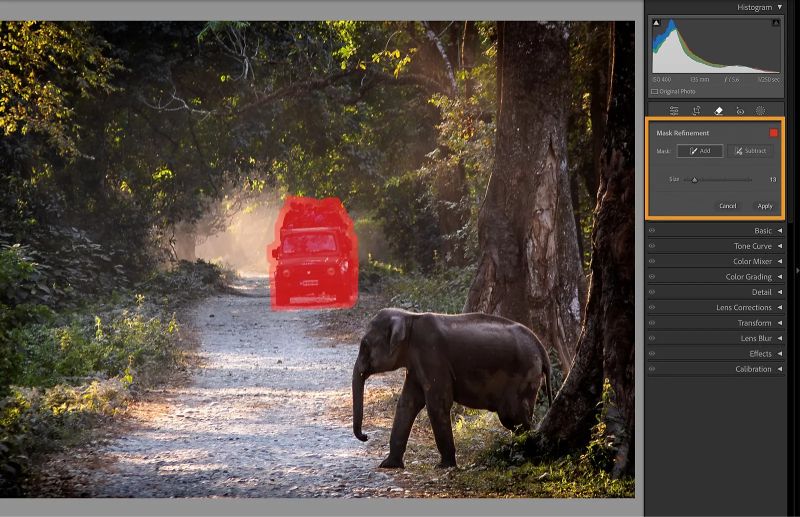In an effort to improve Lightroom’s usability for both novice and expert photographers, especially while editing photos on the go, Adobe is introducing several new generative AI features. These include new AI lens-blurring effects that are now widely available to all Lightroom users and an object removal capability that is still under development and in beta testing.
Using the Firefly AI model developed by the firm, “Generative Remove” is now available for trial on Lightroom’s desktop, online, and mobile platforms. This addition, which Lightroom calls its “most powerful remove tool yet,” lets users “paint” over undesired items or persons in photos and then instantly erase them with a single click.
It has some resemblance to the “Magic Eraser” powers offered by Canva and Google’s Pixel smartphones, as well as the one-click removal features that Adobe showcased for Project Stardust last October. Project Stardust is a beta “object-aware” photo editing engine that is also driven by the company’s Firefly AI. Instead of trying to fill up empty spaces by matching neighboring pixels, as Photoshop’s widely used Content-Aware Fill tool does, the Generative Remove tool creates three possible replacements for the deleted object, from which users can choose the one that best matches their aesthetic preferences.
One of the most amazing live demos of Adobe’s Firefly-powered products I’ve seen was provided by Adobe over a video chat. The technology eliminated every sample object completely without leaving any odd artifacts in its wake, and the backgrounds that were created in its stead appeared natural enough to be convincing while not accurately representing what is behind the object. This not only makes a laborious task easier, but it also makes it simpler for novice users. Professionals used to need to employ some very lengthy masking and editing workflows in order to remove things from images.
While in beta, the Generative Remove function is free to use. After that, it probably will use the “Generative Credit” system, where credit packs now cost $4.99, as used by other Firefly-powered applications. Additionally, when the functionality is widely available, it will support Content Credentials, which adds a metadata label to photos that have been changed with Adobe’s generative AI capabilities.
All Lightroom users can now generally use a new AI-powered Lens Blur function. With just one click, this function may apply a wide range of blurring effects to any portion of an image. It also automatically determines the depth of the field of vision to enhance the natural appearance of background blur. Lens Blur works similarly to a filter; users can use an automatic preset or modify particular settings to achieve the desired result.
Since releasing the generative AI model last year, Adobe has been packing Firefly-powered features into a number of its creative software programs, so these Lightroom enhancements are hardly shocking. However, if people are less intimidated by Adobe’s complex, business-focused UI, making these functions as simple to use as the Facetune app and Google’s Magic Eraser may help draw in new customers.
Inside the failure that forever changed Apple:
The 1984 release of Apple’s Macintosh is credited with launching a new age of user-friendly computing. However! The Mac owes a lot to Lisa, its older, less well-known sister. This is how the Lisa, despite being viewed as a failure now, welcomed everyone into the era of personal computers through brilliant interface design. However, are we finally erasing Lisa’s legacy with the arrival of new technologies like AR, VR, and AI chatbots?
Topics #Adobe #Adobe Lightroom #Editing Software #magic eraser #news #software










